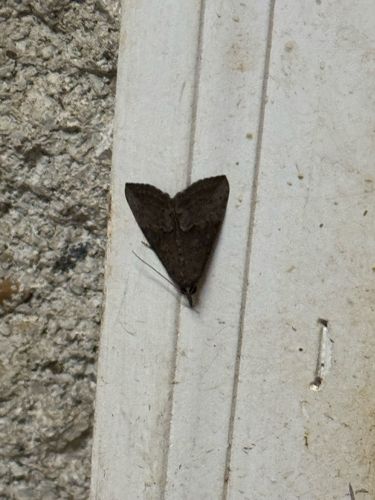Moth (likely a species of Geometrid or Noctuoid moth)
Scientific Name: Too difficult to determine from the image alone without more detail, but it belongs to the Order Lepidoptera.
Order & Family: Order: Lepidoptera (Moths and Butterflies); Family: Likely Geometridae (measuring worms/loopers) or Noctuoidea (Noctuidae, Erebidae, etc.)
Size: Moths vary greatly in size depending on the species, with wingspans ranging from a few millimeters to over 30 centimeters (e.g., Owlet Moths common species are typically 2-6 cm wingspan).

Natural Habitat
Moths are found in a wide range of habitats globally, including forests, grasslands, deserts, urban areas, and agricultural fields, wherever their host plants are present.
Diet & Feeding
Adult moths often feed on nectar from flowers, decaying fruit, or sap, though some species do not feed in their adult stage. Larvae (caterpillars) generally feed on a variety of plant matter, including leaves, stems, and roots, depending on the species.
Behavior Patterns
Moths are typically nocturnal, attracted to lights at night, and they rest during the day. Their larvae (caterpillars) are often herbivores and can be found feeding on plants.
Risks & Benefits
Risks: Some moth larvae can be agricultural pests, causing damage to crops or ornamental plants. A few species are known to cause allergic reactions in sensitive individuals. Benefits: Moths are important pollinators for many night-blooming flowers. Their larvae serve as a food source for various animals, including birds, bats, and other insects, playing a vital role in food webs and ecosystem health.
Identified on: 8/9/2025